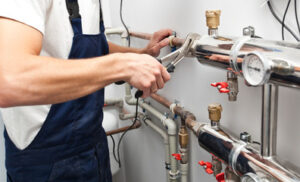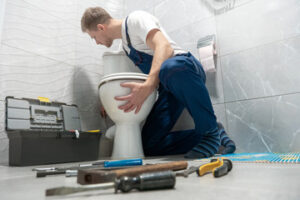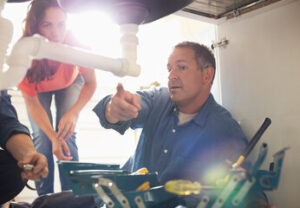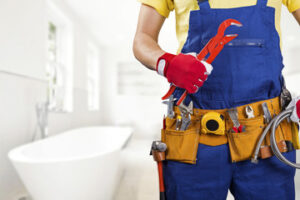Ranger Plumbing Company helps homeowners with issues like leaks or clogs. They also provide essential services like water line inspections and upgrades to improve energy efficiency. With steady demand and ample opportunities for growth, you can make a profitable career in this booming industry.

Choosing the right logo is essential for your plumbing business. It’s the first impression your prospects and clients will have of your company. It must convey professionalism and trustworthiness.
A business plan is an important document for anyone launching a new plumbing company. It captures your approach to the business and includes strategies for marketing, customer service, finances, and operations. It also includes detailed forecasts and projections. In addition, it includes a description of your business structure and legal standing. It is a good idea to include a copy of any licenses or permits required to operate your plumbing business. This will help you demonstrate your legal standing to investors and lenders.
The first section of your plumbing business plan should introduce your company and describe its purpose and promise to customers. This is an excellent way to grab the attention of potential investors and make a strong impression on them. It should also include a short overview of your target market and how you will differentiate your business from the competition.
It is also important to explain your financial projections in the business plan. This will allow you to compare your projected revenues with the startup costs of your plumbing company. This will enable you to identify any gaps in your finances and develop a strategy for overcoming them. You should also include the cost of any equipment or tools needed to operate your plumbing company. It is also helpful to provide a breakdown of your expected expenses, including payroll, utilities, and insurance.
You should also include a brief outline of the day-to-day logistics and organizational structure of your plumbing company. This will help you determine the staffing needs for your company and outline how you will manage key areas like scheduling, invoicing, and customer service. You should also include any plans for training and development of your team members. Finally, you should include any additional documentation or attachments in the appendix. These may include copies of any licenses, certifications, or photographs of your equipment.
Once you have completed the business plan for your plumbing company, you will need to create a scalable model that shows how your business will grow over time. A scalable business model is essential for attracting investors and securing financing.
Equipment
Whether they are installing plumbing systems in new construction or repairing pipes and fixtures, plumbers must have the right equipment to get the job done. There are many different types of tools available, from basic hand tools to more specialized equipment. Some of the most important items include a pipe wrench for tightening and turning pipes, a plunger for clearing drains, and a tube cutter for cutting pipes to size. Other essential items include a drain inspection camera, which allows plumbers to see inside sewer lines and drainage pipes without having to cut them open. Other specialized equipment includes hydro jetting machines, which shoot high-pressure water into drain and sewer lines to clear clogs.
Most professional plumbers keep a fully stocked truck or van with the tools and supplies needed to complete each task. Some of the most common plumbing tools are pipe wrenches, pliers, and screwdrivers. Other tools that plumbers frequently use are drain snakes, a clog removal kit, and plumbing tape. These items are used to make fast and accurate repairs. They are also useful for locating plumbing issues, such as leaks or broken pipes.
Plumbers also need a variety of other specialty tools to do their jobs. These tools are more expensive but can save time and money in the long run. For example, a stubby screwdriver is useful for reaching places that are hard to reach with a standard screwdriver. Plumbers also need a toolkit for completing more complex plumbing tasks, including crimping and soldering. These tools allow plumbers to make watertight connections on copper and stainless steel pipes.
Another type of specialized equipment is a drain inspection camera, which is a small video camera tethered to a flexible cable. This device can be inserted into sewer lines and drains to detect clogs, breaks, or other problems. Plumbers can then use the resulting video to locate and fix the issue.
In addition to these specialized tools, plumbers need a wide range of regular plumbing equipment. This includes a variety of sizes and types of pipe, copper and brass compression fittings, and service valves. They also need sealants, cleaning materials, and other supplies to repair and maintain the plumbing system. To simplify the process of tracking material needs, plumbers can use a free downloadable plumbing materials list template.
Insurance
A plumbing company can face a lot of risks when working on projects. This is why it’s important to have proper insurance coverage in place. For example, if your work causes damage to a client’s property, plumber insurance can help cover the cost of repairs and legal fees that may arise. This type of coverage is typically affordable and can be a valuable asset for your business.
In addition, there are other types of coverage that can protect your business from financial loss. Commercial auto insurance can pay for damages caused by your employees while driving to and from job sites. Additionally, it can cover the costs of replacing tools and equipment that are lost or stolen. Plumbing contractors can also purchase workers’ compensation insurance to cover medical expenses and lost wages if an employee is injured on the job.
Another type of insurance that is critical for a plumbing business is environmental insurance. This type of policy can cover cleanup costs, defense fees, and damages resulting from hazardous spills or leaks, such as fuel, oil, and sewage. This is particularly important since most municipalities require that contractors carry this type of insurance.
Finally, life insurance can be a great benefit for a plumbing contractor. If you die while still carrying a substantial debt burden for your business, your family or partners can use the proceeds of the insurance policy to pay off those debts. This can save your business from having to close and can prevent your hard work from going to waste.
There are a variety of insurance policies available for plumbing businesses, including general liability, commercial auto, and workers’ compensation. It is best to speak with a licensed insurance professional about your specific needs and circumstances. Some policies are offered as a bundle, such as a business owner’s policy that includes liability and property coverage. This is an excellent option for small and medium-sized plumbing companies, as it can reduce the amount of paperwork and red tape required to obtain these essential policies. Moreover, the premiums for these policies are much lower than for individual policies.
Marketing
A strong plumbing brand differentiates its services from competitors by providing a unique value proposition that clients can’t get elsewhere. This can be a special offer, unique customer experience, or some other element that makes your business stand out from the crowd. This type of branding helps to generate more leads, improve client satisfaction, and increase revenue.
A comprehensive website is a critical marketing tool for any plumbing company. It provides important information about your business, including service types and pricing. It should also include customer testimonials and case studies to show potential customers the quality of your work. In addition, a website should be easy to navigate and include an online contact form.
Social media marketing is an effective way to grow your plumbing business by establishing connections with local communities. This strategy transforms your company into a visible digital brand and builds trust through consistent interactions with local audiences. Sharing before-and-after photos of completed plumbing projects demonstrates your expertise and establishes credibility in the eyes of prospective clients. Professional documentation of repair projects ensures that you follow local building codes and safety regulations. In addition, responding to online reviews in real time is key to fostering customer loyalty.
Another effective marketing strategy is to participate in community events and sponsor local causes. These activities help to build a positive image for your company in the eyes of local residents, and can lead to more referrals. It is also important to have a well-designed logo and use it on all of your marketing materials, as this will help to create a consistent image for your business.


